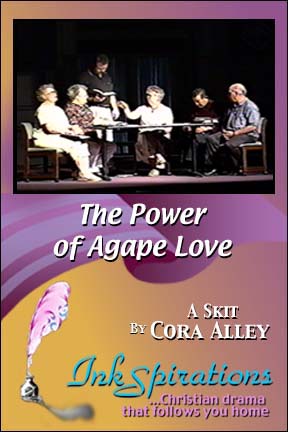.
Artfully Done!

.
“Artful Skits” pull the rug of expectation out
from underneath the audience!
Your Christian drama ministry will delight in accepting the challenge of illustrating the pastor’s message with these unforgettable Christian drama skits. “Artful Skits” fall into six sub-categories: Dream Skits, Metaphor Skits, Monologue Skits, Rewind Skits, Three-in-One Skits, and Realistic Skits.
“Artful Skits” provide very memorable introductions, conclusions, or midway examples for the pastor as he presents the sermon.
Click on the links below to explore the scripts
in the six categories of “Artful Skits.”

Dream Skits are surrealistic dramas in which the central character finds him or
herself in a “Twilight Zone”-type situation that simply does not happen in real
life, but these unreal happenings give real-world insights. The audience gets a
firsthand look at psychological struggles as they manifest themselves in “odd”
happenings.
.

Metaphor Skits use concrete items to represent abstract ideas. Physical objects
(props) help state the theme of the message. These skits use a surrealistic
style to make their point; such as: a crown worn by a dominant person, or
another actor falling over when someone speaks harshly to him.
.

.

Rewind Skits turn back the clock, as actors reverse the action by replaying the
scene backwards. Then, they begin it again; this time, they repair bad decisions,
promote relationships, and undo the mess they found themselves in the first time.
.

Realistic Skits incorporate more common “day-to-day” situations to illustrate the
“real life” spiritual struggles people face. The characters struggle to understand or
achieve something that resonates with the audience, and sends them home with
the steadfast truth that God is ever-present.
.

Three In One Skits present three separate stories, told scene-by-scene, alternating
with each other, yet together they make one point. When actors finish one scene,
they freeze in position; their last line sets up the next actor’s first line. Each scene
resumes exactly where it ended, when it starts again. Each scene ends with the
same conclusion or summary statement.
.
